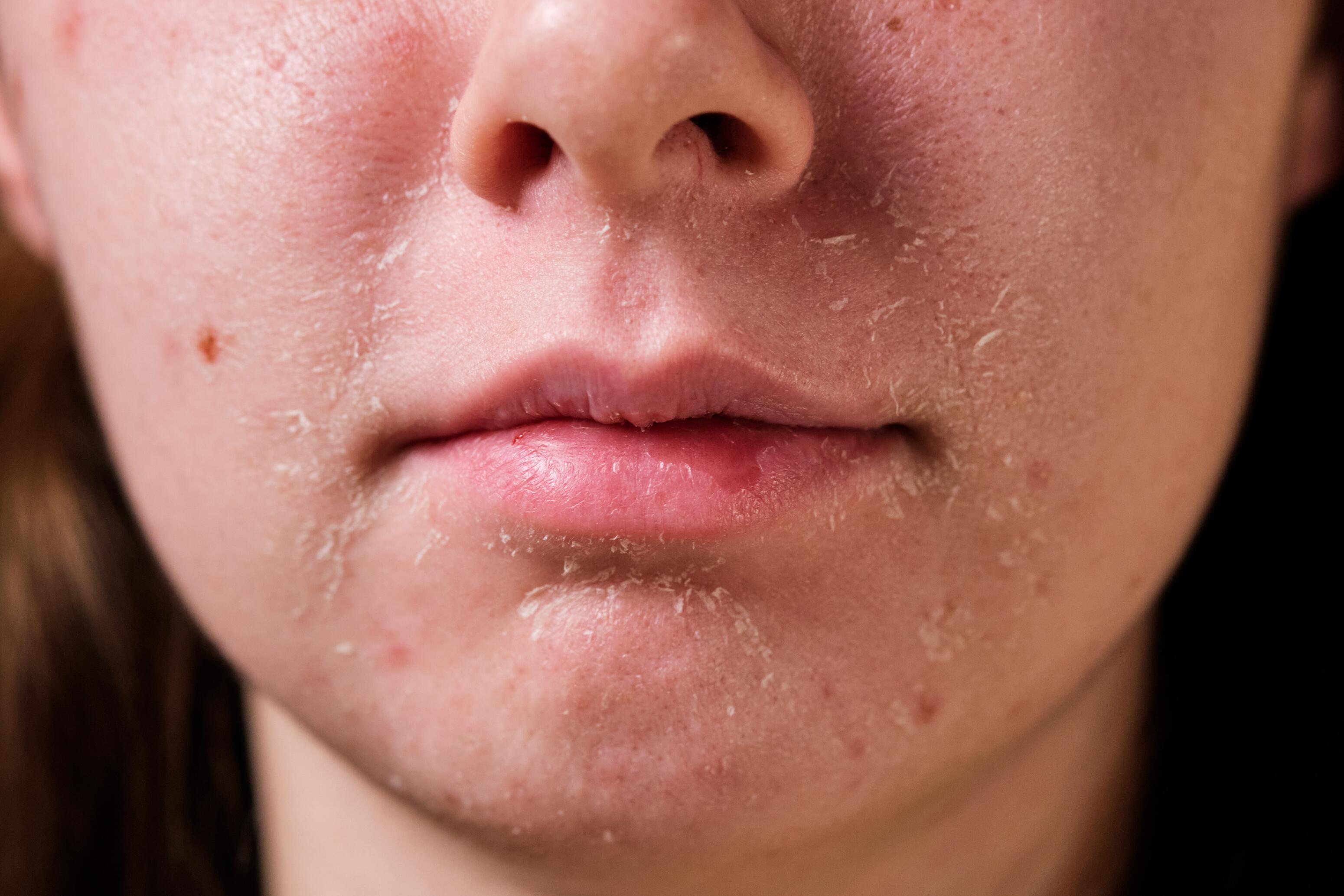- Your skin
-
Our products
Do you know well atopic dermatitis ?
DEXERYL supports you and take care of your dry skin each day
-
CLINICAL RESULTS
- About dexeryl
Treat dry facial skin effectively with our skin care guide.
Discover best moisturising practices, recommended products and expert advice.

Summary
The skin on the face, finer and more delicate than the rest of the body, is particularly vulnerable to cutaneous dryness. This fragility is due to more frequent exposure to environmental factors and external aggressions: wind, UV rays, pollution and temperature variations.
What's more, our daily habits accentuate this trend. Frequent cleansing of the face removes protective natural oils, upsetting the hydrolipidic balance and weakening the skin barrier.
Adopting the proper facial care routine focusing on hydration and protection is essential to maintain healthy, comfortable skin. This approach helps to prevent dryness, restore skin balance and combat premature skin ageing.
Many internal factors can predispose to skin dryness. Genetics play a fundamental role in the structure of the skin barrier and water retention capacity, which vary from one individual to another. Similarly, hormonal fluctuations linked to puberty, pregnancy and menopause affect sebum production, altering the skin's moisture balance. Finally, with age and skin ageing, the activity of the sebaceous and sweat glands diminishes, increasing the tendency for skin dryness.
External environmental factors play a significant role in the appearance of skin dryness:

The main symptom of dry skin on the face is a feeling of tightness, particularly noticeable after cleansing or exposure to adverse weather conditions. The skin may also feel rough, with usually smooth areas becoming uneven. Itching (or pruritus) may appear, and the resulting scratching may lead to excoriations and aggravate the skin's condition.
The visible signs of dry skin on the face often include redness, particularly on the most exposed areas, such as the cheeks, nose and forehead. Sometimes, the skin may become particularly irritated or inflamed, leading to severe redness (erythema).

To restore the skin's moisture balance, dermatologists recommend using specific moisturising products combining hydrophilic and lipophilic ingredients. Hydrophilic components, such as glycerol and urea, attract and retain water in the stratum corneum. Lipophilic components like vaseline, silicones and ceramides form a protective barrier that reduces trans-epidermal water loss.
The choice of specific moisturiser for the face should be made according to skin type and particular needs. Generally speaking, the drier the skin on the face, the more you should choose lipid-rich, nourishing creams that provide intense, long-lasting hydration.
In the event of redness or itching, soothing or antipruritic ingredients can be added to the formulations.
To preserve the skin barrier, it is essential to choose suitable cleansing products. Dermatologists recommend gentle cleansers that protect the lipids and proteins of the stratum corneum while depositing moisturising substances on the epidermis. These facial cleansing products generally contain the following:
- Cleansing agents with a pH close to that of the skin.
- Humectants such as glycerine or urea retain water in the skin.
- Lipophilic ingredients such as Vaseline reinforce the lipid barrier.
The product choice will, therefore, depend on the type of skin and its specific hydration needs. Very dry skin will benefit more from cleansing oils or creams, which are richer in lipophilic compounds.
To effectively moisturise dry facial skin, follow these hydration and dermatological tips:
Protecting yourself against external aggression is essential to prevent facial dryness.
Internal hydration is also essential to prevent dryness on your face; drink at least 2 litres of water daily and eat a balanced diet rich in omega-3s and antioxidants. Probiotics and prebiotics can promote a healthy intestinal microbiome, which helps to improve the skin barrier. Finally, dermatologists advise limiting the consumption of potentially irritating foods such as spices, citrus fruits and alcohol.

DEXERYL Emollient Cream provides deep, long-lasting hydration for the skin on your face, helping to restore moisture imbalances and strengthen the skin barrier.
Its unique formula contains no irritants such as perfumes, alcohols or parabens:
- Glycerol attracts and retains water in the epidermis to rehydrate the skin on your face
- Vaseline and paraffin form a protective film on the skin's surface, reinforcing the cutaneous barrier.
DEXERYL is your daily moisturiser for facial skin.
References
1. Augustin M and al. Diagnosis and treatment of xerosis cutis - a position paper. J Dtsch Dermatol Ges. 2019 Nov;17 Suppl 7:3-33.
2. Gade A, Matin T, Rubenstein R. Xeroderma. 2023 Oct 29. In: StatPearls [Internet]. Treasure Island (FL): StatPearls Publishing; 2024 Jan–.
3. Draelos ZD. The science behind skin care: Cleansers. J Cosmet Dermatol. 2018 Feb;17(1):8-14. doi: 10.1111/jocd.12469. Epub 2017 Dec 12. PMID: 29231284.
4. Mukhopadhyay P. Cleansers and their role in various dermatological disorders. Indian J Dermatol. 2011 Jan;56(1):2-6.
5. AAD. Dry skin: tips for managing. American Academy of Dermatology Association. 202 Jun 18. [Internet]. Available on: https://www.aad.org/public/diseases/a-z/dry-skin-self-care
6. Palma L and al. Dietary water affects human skin hydration and biomechanics. Clin Cosmet Investig Dermatol. 2015 Aug 3;8:413-21.
7. Parke MA and al. Diet and Skin Barrier: The Role of Dietary Interventions on Skin Barrier Function. Dermatol Pract Concept. 2021 Jan 29;11(1):e2021132.